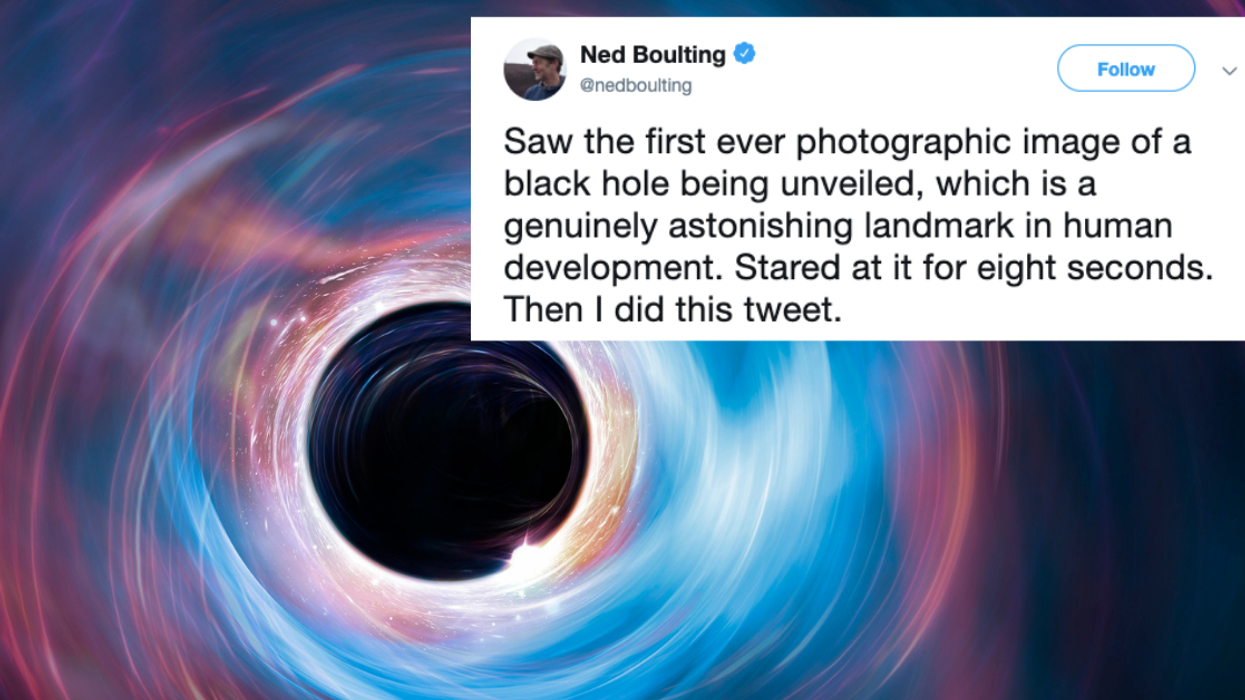
Behold!
Researchers with The Event Horizon Telescope project just released the first-ever photo of a black hole, more than a century after Albert Einstein theorized their existence.
"We are delighted to report to you today that we have seen what we thought was unseeable," Shep Doeleman, project director of the Event Horizon Telescope, said at the National Science Foundation's press conference in Washington, DC. More than 200 researchers were involved in the project.
As one report points out:
In their attempt to capture an image of a black hole, scientists combined the power of eight radio telescopes around the world using Very-Long-Baseline-Interferometry, according to the European Southern Observatory, which is part of the EHT. This effectively creates a virtual telescope around the same size as the Earth itself.The telescopes involved in creating the global array included ALMA, APEX, the IRAM 30-meter telescope, the James Clerk Maxwell Telescope, the Large Millimeter Telescope Alfonso Serrano, the Submillimeter Array, the Submillimeter Telescope and the South Pole Telescope. ..
The telescope array collected 5,000 trillion bytes of data over two weeks, which was processed through supercomputers so that the scientists could retrieve the images.
Daniel Marrone, associate professor of astronomy at the University of Arizona, elaborated further:
"The observations were a coordinated dance in which we simultaneously pointed our telescopes in a carefully planned sequence. To make sure these observations were truly simultaneous, so that we could see the same wavefront of light as it landed on each telescope, we used extremely precise atomic clocks at each of the telescopes."
The image captures the black hole's event horizon. This is a point of no return where nothing is seen and nothing can escape.
The velocity required to exit would have to be faster than the speed of light, but the theory of relativity tells us that this is impossible.
The supermassive black hole is at the center of a galaxy known as M87, near the Virgo galaxy cluster 55 million light-years from Earth. It has a mass that is 6.5 billion times that of our sun. Its enormous mass gives researchers reason to believe that it might be the largest black hole viewable from Earth.
The photograph is a huge step forward, marking the culmination of a century's work of scientific theory––and people are thrilled.
April 10th , 2019: Black Hole Day.
It's still early 2019. Wonder what the rest of the year will bring?














 @SecWar/X
@SecWar/X reply to @SecWar/X
reply to @SecWar/X reply to @SecWar/X
reply to @SecWar/X reply to @SecWar/X
reply to @SecWar/X
 reply to @SenMarkKelly/X
reply to @SenMarkKelly/X reply to @SenMarkKelly/X
reply to @SenMarkKelly/X reply to @SecWar/X
reply to @SecWar/X reply to @SecWar/X
reply to @SecWar/X reply to @SecWar/X
reply to @SecWar/X reply to @SecWar/X
reply to @SecWar/X reply to @SecWar/X
reply to @SecWar/X

